The Guinness Storehouse and Brewery, Dublin, Ireland
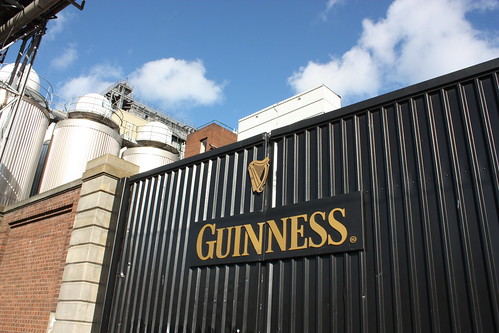
–
My husband is a beer drinker.
It’s one of the many things I love about him. He looks great in a suit; he taught me which fork to use at fancy dinners (when in doubt, start at the outside and move in towards your plate); and he can discuss 20th century art without sounding like a pedantic ass.
He also likes football, and Buffalo wings, and a really good beer. And he reminds me that in those things, there is poetry and elegance as well. So while in Dublin, despite Rand’s shouldn’t-have-been-but-actually-was busy schedule, I forced him to take a break and go with me to the Guinness Brewery.
Yes, I wanted him to relax (funny thing, though – a wife glaring at you, asking, “ARE YOU RELAXING?” will in no way help you relax. Just thought you should know). But I had selfish motivations, too: I knew that I couldn’t appreciate the brewery without him. And as angry as I was, I still wanted to see him.
That’s weird, right? I was a walking contradiction.
Not unlike, you know, a guy who is as in love with Ted Baker as he is Aaron Rodgers. But I digress.
There are two parts to the Guinness facility in Dublin. The Storehouse, which includes interactive displays and tasting rooms, and the actual St. James Gate Brewery, named after the neighborhood in south Dublin where it’s located.

There is also a chapel located conveniently nearby. In case you want to get drunk and then married.
–
Guinness traces its beginnings back to 1759, when Arthur Guinness leased a plot of four acres at the price of 45 pounds a year. Ever a forward thinker, he signed a 9,000 year lease (I LOVE this fact. It is the greatest fact in the history of facts). Somewhat disappointingly, the lease is now irrelevant, as the land was purchased outright by Guinness some time ago.
A century or so ago, it was the largest brewery in the world. Though it no longer holds that title, it still covers more than 50 acres, and all Guinness sold in the U.K. and Ireland is made there.
So, in my husband’s eyes, it’s basically one of the most important spots in Europe.
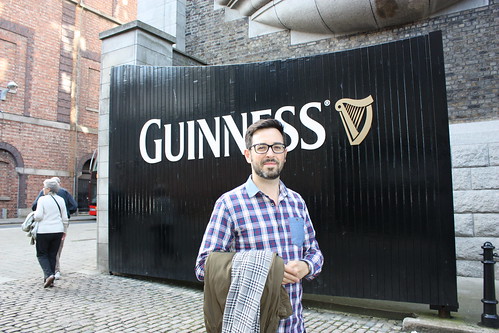
–
You can’t actually tour the brewery itself, but you can visit the exhibits at the Guinness Storehouse. You won’t see beer being made, but you can walk through the entire brewing process. And then you can drink beer.
Contrary to what this next photo suggests, the tour is self-guided (if you don’t speak English, you can pick up a translator. I mean a translating device, not a translating person. Though I suppose you could pick up a person, too, if you wanted. But the Storehouse doesn’t supply those for free.)
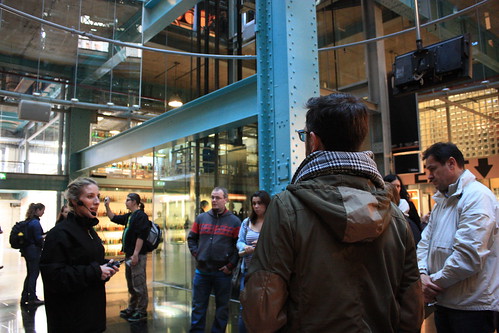
She was very pleasant; I’m not sure why everyone in this photo looks miserable.
–
The self-guided tour begins with barley. Because to make beer, you need barley. And lots of it.
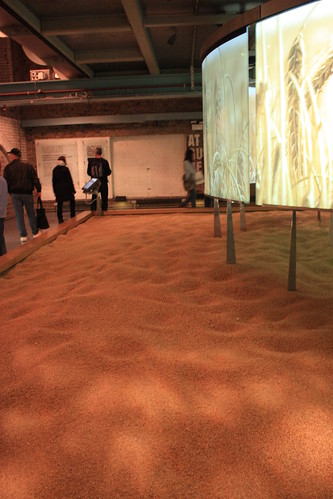
Note: this barley was there for display, and not used for making beer. So you can plunge your hands in it all you like, which is weirdly gratifying.
–
Like, a hell of a lot of barley. So much barley, you can barely wrap your head around it. (Sorry. I just really wanted to use “barley” and “barely” together in a sentence).
In fact, two-thirds of all the malting barley produced in Ireland every year is purchased by Guinness.
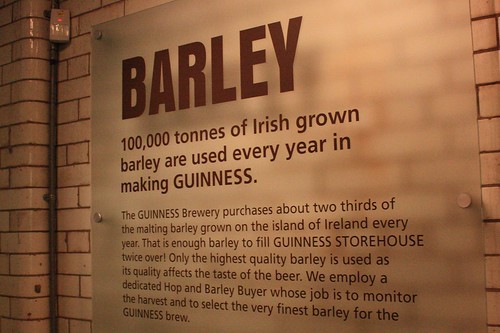
See? WHAT DID I TELL YOU.
–
What? I totally knew that fact before I saw the sign. Shut up. I did, too.
Ahem.
The first step to making Guinness is to mill the barley (that is, to crush it). The resulting product is called grist. –
And did you know that beer is mostly water? True story. The next stage of making beer is to add water to the grist and stir it up. Based on that, you’d think that drinking lots of beer would be a great way to hydrate.

–
For the record, it’s not.
The water display at the Storehouse is kind of fantastic. I made Rand pose in front of it with me and pretend we weren’t angry with each other.
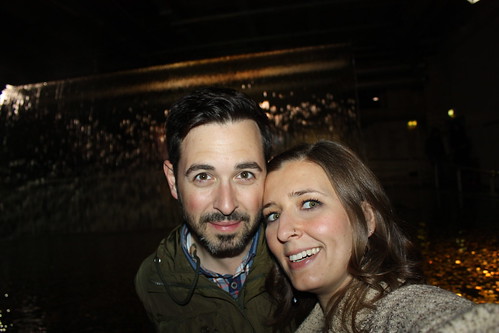
Look! In this photo you can barely see the rage (in the other photos, you can, though. So I’m not putting them up.)
–
Once you’ve added hot water to the grist, you send it through something called a masher, which sounds rather violent. But all it does is mix up the concoction and release brewing sugars.
Since most people don’t like chunky beer (though I argue it’s only a matter of time until they do), the barley particles are then strained out of mix, and the resulting liquid is given the rather unappealing name of “sweet wort”.
Here’s where the hops come in.
Hops are another of the basic ingredients used to make beer. In the past, I’ve pretended to know what they are. I figured “hops” were some kind explosive (“Watch out … those HOPS ARE GONNA BLOW!”) or possibly an animal by-product (“Eww. These hot dogs are made from 90% hops.”) I was wrong.
Shocking, I know. (Especially after that bit with the barley before. I kind of figured I was on a roll.)
Turns out hops are a kind of plant. Nowadays, they are used almost exclusively in the production of beer, to give it that bitter taste I’m so not fond of.

Hops, in all their hoppy glory. (Note: they do not actually hop.)
–
Hops are added to the sweet wort along with more barley (which has been toasted), and the substance is boiled for a bit. At this point, I would like to note that I have no idea how people could have looked at barley and hops and water and thought, “DUDE, I have a great idea for a drink.”
I mean, it seems like you would have to be drunk to come up with the idea of beer, you know? It’s a whole chicken and egg kind of thing.
Anywho, at some point, the hops and barley are strained off and yeast is added. For the record, seeing “YEAST” in giant letters is kind of hilarious. Behold:

Told ya.
–
Since the early 1900s, a bit of yeast from each batch of Guinness is passed on to the next batch. And just in case something goes awry, they keep a sample of the yeast in a safe, to avoid a beer-tastrophe (Again, I’m sorry. I have no idea what’s wrong with me tonight. I swear I’m sober.)
I made Rand pose with one of the old yeast safes.
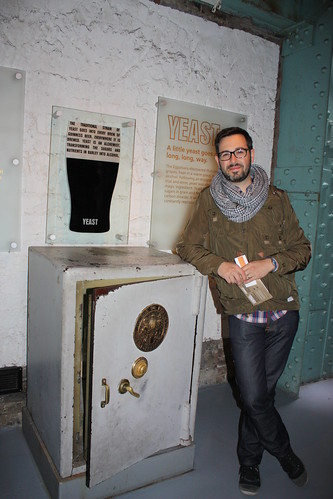
“This is the yeast-safe form of protection they could have used!” – Rand
–
After the yeast has been added, fermentation occurs. I’m just going to let you make your own jokes about that.
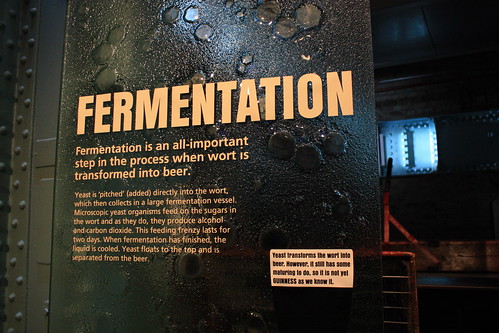
–
The mixture is then given some time to mature, after which it stops staying out late and getting way too worked up about the results of American Idol.
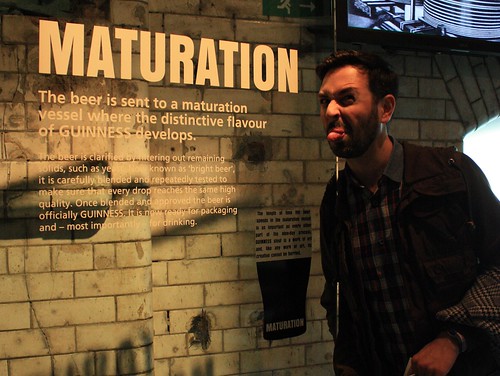
My husband’s feelings on maturation.
–
It is then packaged, and depending on the type of Guinness, nitrogen or carbon dioxide are added.
The Storehouse walks you through this entire process, and gives you a bit of history about Guinness himself, who was somewhat of a beer pioneer (heh). He started making a light ale, but then switched to exclusively producing a darker beer. It became known as “porter” because of its popularity among the working class porters.

It is also popular among my husband.
–
Older models of much of the machinery used to make beer are on display.
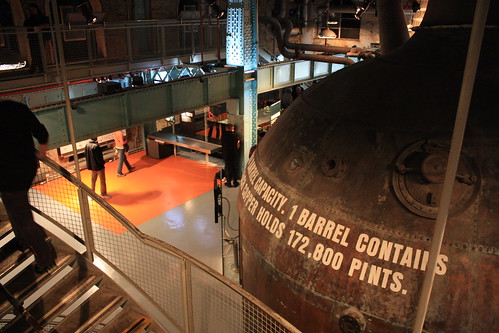
–
I wasn’t entirely clear on what everything was, but I still made Rand pose for photos next to things. Which shall hereby be referred to as “beer-making doohickeys.”

“Stand next to that thing so I can take a picture of it.”/ “What is it?” / “I don’t know. Just stand next to it.”
–
The Storehouse winds upward as it tells the story of Guinness. There are many, many escalators.
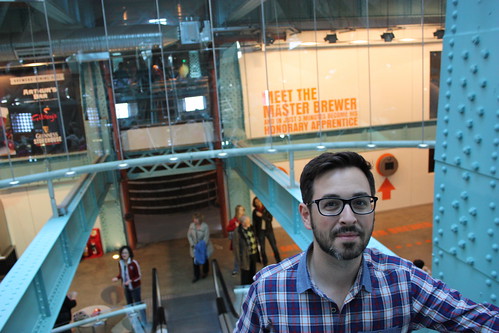
And excessively handsome men on escalators.
–
Eventually, you reach the Gravity Bar on the top floor. Your admission ticket includes a free drink, which you can redeem up there (and several other locations throughout the building, but frankly, the 360 degree views from the top can’t be beat). On clear days, the panorama is amazing …
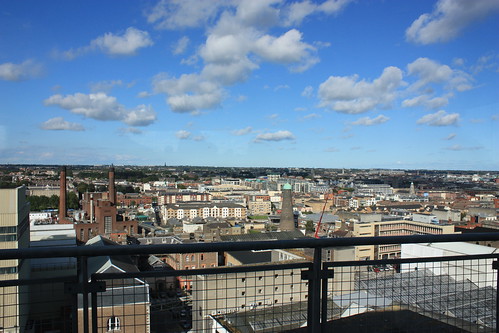
–
And the place is packed to the gills …
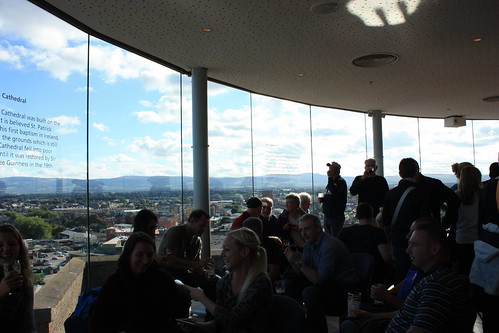
–
And there’s the occasional feuding couple trying to make peace with one another.
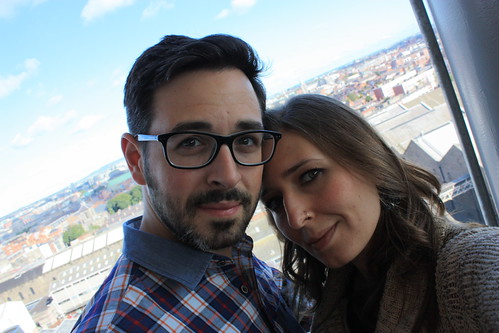
–
Rand and I didn’t actually have time to enjoy a drink up there. We snapped a few photos, weaved our way through the crowd, and left. He needed to get back to the hotel to finish up his presentation, and I’d taken up enough of his time (later, we’d both learn that he had unknowingly missed an important meeting to be with me at the brewery. Which still pains me to think about).
We’ll have to go back again sometime. When Rand isn’t so swamped with work. When I’m not so angry at him for having to compete for his attention. Hopefully the views will be just as lovely.
And seeing the word “YEAST” in huge letters will still be just as funny.
—————
The Essentials on the Guinness Storehouse:
- Verdict: Yes. I’m not even a beer drinker, and I thought this place was great.
– - How to Get There: If you are staying downtown, you can easily walk here (our hotel was across the water from Temple Bar, and we found that the stroll is nice if the weather cooperates). There are also plenty of opportunities to get there via public transport.
– - Ideal for: Beer drinkers, Irish history lovers, and anyone who isn’t up for an art museum but still wants to appreciate something created with passion.
– - Insider Tips: Give yourself a solid 90 minutes to see everything, as well as time to grab a drink at the Gravity Bar and mill around. Alternatively, you can use your drink ticket on a lower level bar, where they will teach you how to pour Guinness (again, we had no time for that, but it looked pretty neat). There is plenty to see, and rushing through this place is not fun (trust me). And try to pick a less-crowded day to tour (since it was sunny, we actually had fewer crowds to contend with, as no one wanted to be inside).
– - Nearby food: there’s cafes inside, which serve rather traditional pub fare (according to Yelp, the food varies), and there are also a huge wealth of restaurants in the Temple Bar area, which isn’t a terribly far walk.
– - Good for kids: Children are allowed in the storehouse, but I suspect they would be bored to tears (those under 18 still get a complimentary drink, it’s a soda. Which is for the best.) I’d suggest leaving the little ones at home, unless you have someone who’s wee enough to fit in a stroller and will sleep through the noise and commotion.



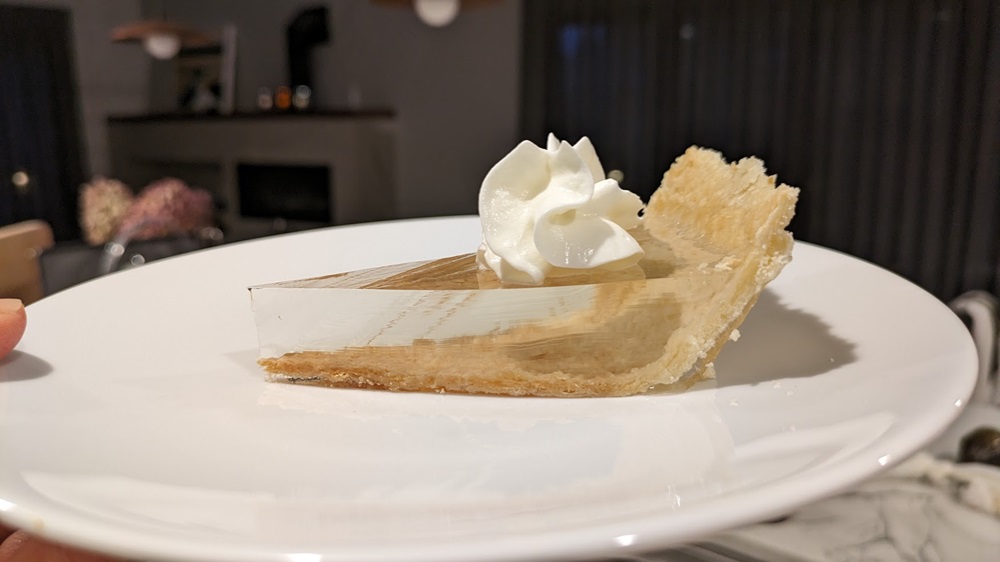

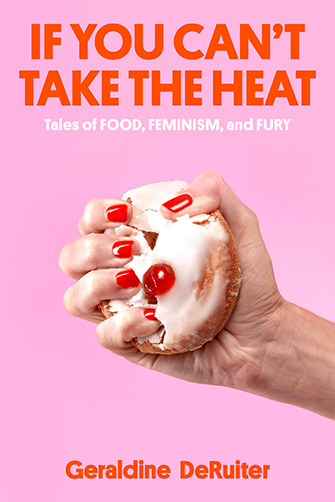



Leave a Comment